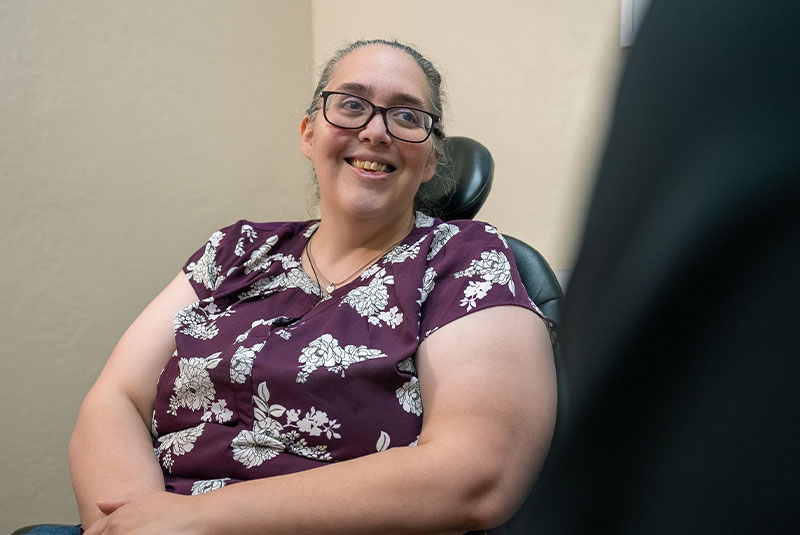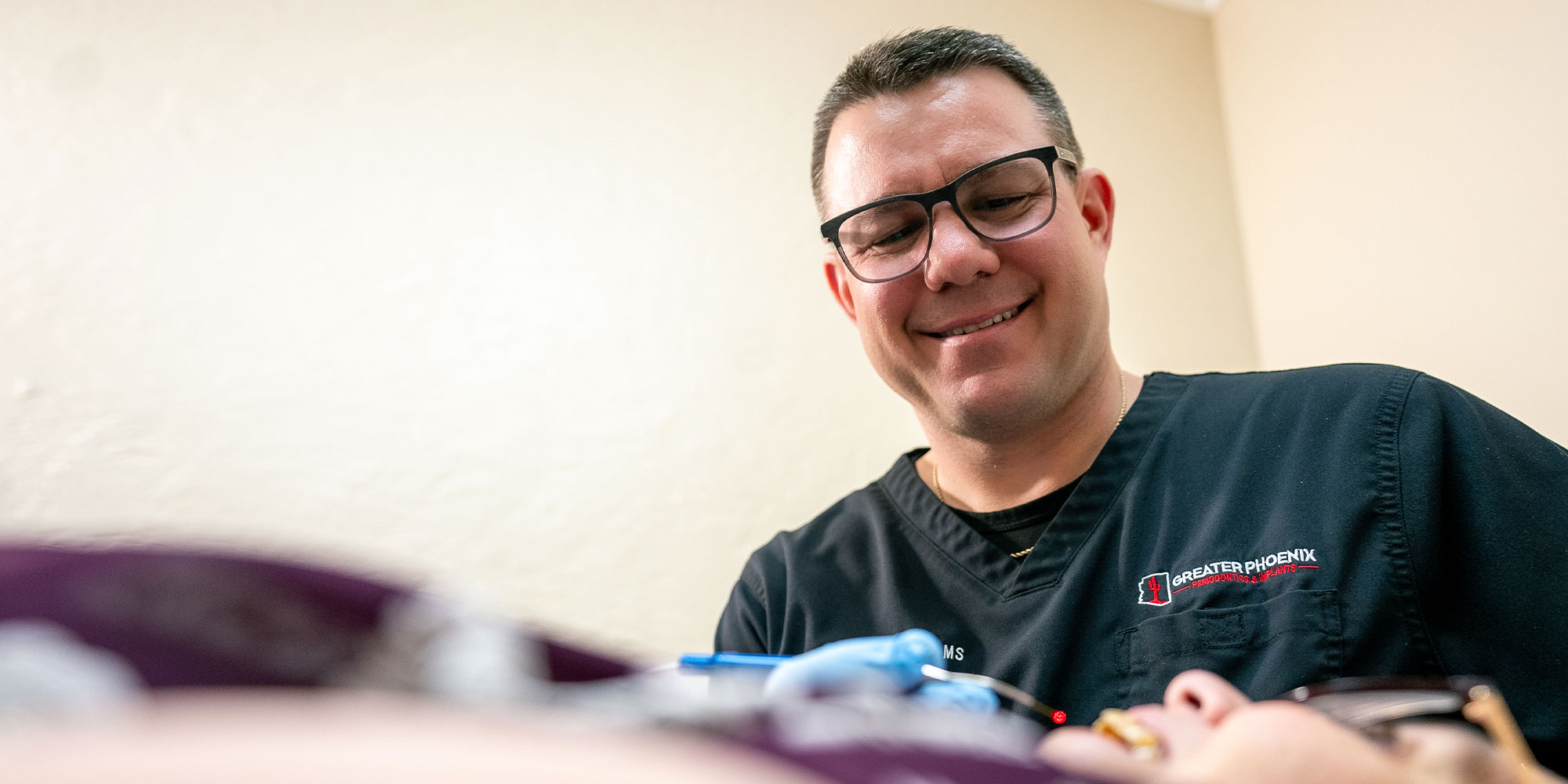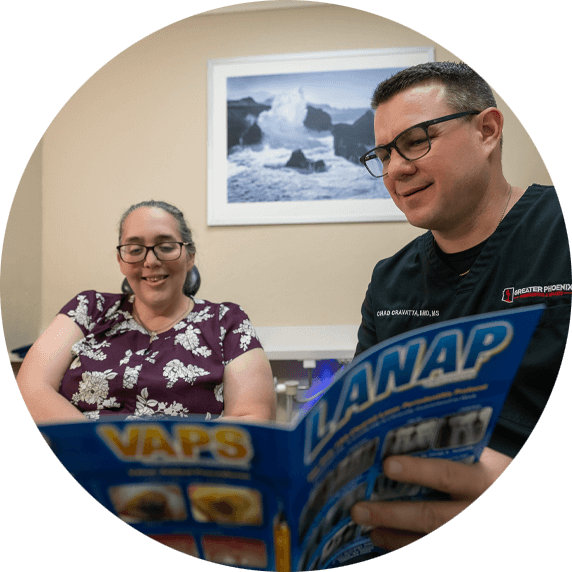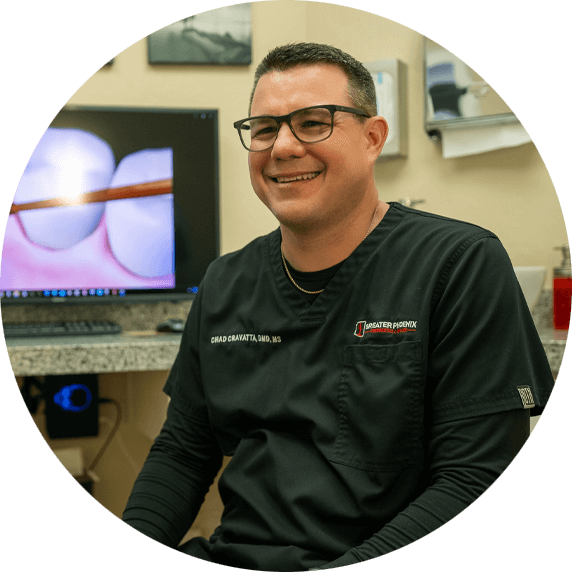
Gum disease, or periodontal disease, is a severe infection that severely damages the gums and bones around teeth. Those with gum disease may experience numerous health issues that do not go away independently.
Gum disease symptoms include bleeding gums, bad breath, receding gums, loose teeth, failing dental implants, and many more. At Greater Phoenix Periodontics & Implants, our periodontist, Dr. Chad Cravatta, is happy to offer LANAP laser gum disease surgery to help treat gum diseases such as peri-implantitis in our community in Mesa, AZ!

LANAP, or Laser-Assisted New Attachment Procedure, is a form of laser dentistry that helps promote gum tissue regeneration, gum tissue attachment, and new bone growth. This surgery is typically used to treat advanced periodontal disease, gingivitis, and peri-implantitis.
Peri-implantitis is a destructive inflammatory process that affects the soft and hard tissue around a dental implant. It can result in failing dental implants and even lesions or bone loss. With the help of LANAP, our team can help treat gum disease and restore oral health.


The tiny LANAP laser fiber is inserted between your teeth and gum tissue to eliminate the infection without cutting or stitching the gums. Your tooth roots are thoroughly cleaned of tartar and plaque. Then, the laser is used on a different setting to create a fibrin clot between your teeth and gums, sealing the pocket and initiating the reattachment of gum tissue.
When you get LANAP gum surgery at Greater Phoenix Periodontics & Implants from our periodontist, you can resume a home oral hygiene routine sooner than traditional gum surgery because healing is far faster and less painful.

Monday
8:00 – 4:00
Tuesday
7:00 – 5:00
Wednesday
7:00 – 5:00
Thursday
7:00 – 5:00
Friday
7:00 – 2:00
Saturday
Closed